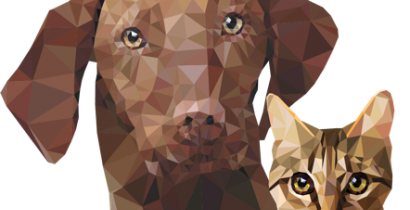Home -> Diseases -> Tick-Borne Diseases -> Haemoplasmosis
HAEMOPLASMOSIS
Haemoplasmosis, formerly called haemobartonellosis, is a vector-suspected infection of the red blood cells that affects both, cats (Clark, 1942; Flint and Moss, 1953; Foley et al., 1998; Willi et al., 2005) and dogs (Benjamin and Lumb, 1959; Donovan and Loeb, 1960). Besides these two affected species, closely related haemoplasmas have also been detected in several other mammals (see e.g., Messick, 2004 for detailed listing), and a zoonotic potential of haemoplasmas can also not be excluded and should be further addressed (Sykes, 2010; Willi et al., 2007).
The mode of transmission of feline and canine haemoplasmas is still under discussion. Arthropods, here especially fleas and ticks, have been suggested as vectors. Thus, listing of the disease could be under tick-borne diseases, but also under flea-borne diseases. Under the latter you will find detailed information on our website. Please see under haemoplasmossis for further data.
References
Benjamin MM, Lumb WV: Haemobartonella canis infection in a dog. J Am Vet Med Assoc. 1959, 135, 388-90
Clark R: Eperythrozoon felis (sp. nov.) in a cat. J South Afr Vet Med Assoc. 1942, 13, 15-6
Donovan EF, Loeb WF: Hemobartonellosis in the dog. Vet Med. 1960, 55, 57-62
Flint JC, Moss LC: Infectious anemia in cats. J Am Vet Med Assoc. 1953, 122, 45-8
Foley JE, Harrus S, Poland A, et al.: Molecular, clinical, and pathologic comparison of two distinct strains of Haemobartonella felis in domestic cats. Am J Vet Res. 1998, 59, 1581-8
Messick JB: Hemotrophic mycoplasmas (hemoplasmas): a review and new insights into pathogenic potential. Vet Clin Pathol. 2004, 33, 2-13
Sykes JE: Feline hemotropic mycoplasmas. J Vet Emerg Crit Care (San Antonio). 2010, 20, 62-9
Willi B, Boretti FS, Tasker S, et al.: From Haemobartonella to hemoplasma: Molecular methods provide new insights. Vet Microbiol. 2007, 125, 197-209
EXPLORE OUR CONTENT
 CVBD MapsThe CVBD Occurence World Map presents country-specific situations based on current scientific knowledge and feed-back from experts around the world in an easy-to-grasped way. |
| Read more-> |
 ResourcesElanco Animal Health supports education in parasitology and especially in the field of vector-borne diseases. Access image collections, discover the World Forum calendar, interesting links and our glossary. |
| Read more-> |
 CVBD World ForumThe CVBD World Forum is a working group of leading international experts with the mission to enhance knowledge and communication on companion animal vector-borne diseases for the improvement of animal, human, and environmental health. |
| Read more-> |
